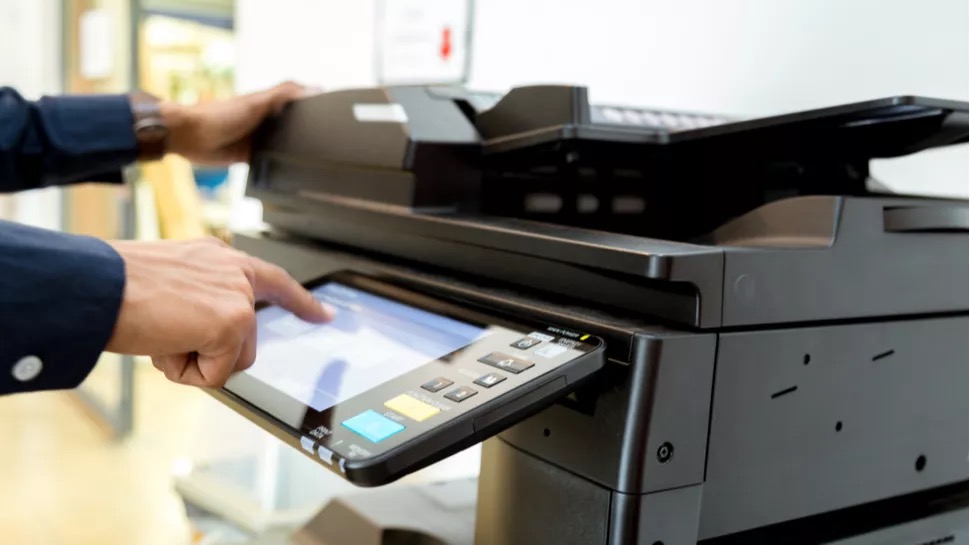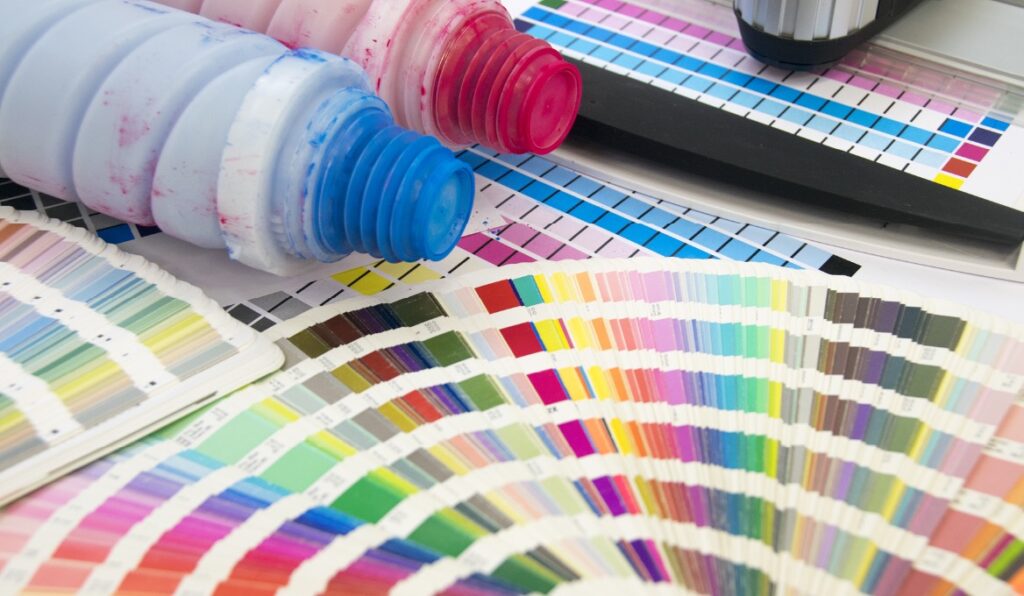إن العيش في عالم بدون طابعات أمر لا يمكن تصوره. لن يكون لديك خيار "طباعة" على جهاز الكمبيوتر الخاص بك. ستحتاج إلى الكتابة باليد لمشاركة ملفاتك أو إرسال Sofcopy.
كيف سيكون غريب?
إن ابتكار طباعة الليزر لعام 1957 هو شيء يجب أن نقدره. هذه القطعة تأخذك خلال العملية برمتها.
الخطوة 1: إرسال

ستبدأ عملية طباعة الليزر عند الضغط على زر الطباعة هذا. سيقوم جهاز الكمبيوتر الخاص بك بتفكيك البيانات وإرسالها إلى الطابعة المحددة. الهدف هو نقل البيانات الرقمية إلى الورق.
الخطوة 2: تنظيف
تترك الطابعات بقايا الحبر بعد كل طباعة. ستقوم طابعتك بتنظيف هذه المخلفات عند إرسال مهمة الطباعة التالية. الطابعة تنظف أسطوانة OPC بمساعدة الشحنات الكهربائية. تقوم العملية بمسح جميع الحبر على أسطحها وإعدادها لمهمة الطباعة التالية.
هذه بقايا الحمولة يتم كشطها وتوجيهها إلى الحبر النفايات. قد تبقى بعض الشحنات الكهربائية بعد العملية. هناك مصباح محو كهربائي من شأنه نزع فتيل هذه الرسوم. هذا يضمن عدم تسبب التهم أخطاء في الوظيفة التالية.
الخطوة 3: تكييف
تعتمد طباعة الليزر على الشحنات الكهربائية. تحتاج الورقة إلى فرض رسوم على جذب الحبر. وحدة الطبل, أيضاً, يجب أن يتم شحنها. كل هذا الشحن يحدث في هذه الخطوة, يشار إليها الآن باسم التكييف.
تريد أن تعرف كيف يحدث ذلك?
حسنًا, كل شيء يبدأ مع أسطوانة الشحن الأساسية. سوف تدور طبل الموصلات الضوئية العضوية, الذي يثير الأيونات على سلك كورونا. هذه الأيونات ستقوم بعد ذلك بغطاء الأسطوانة التي تزودها بالكهرباء الثابتة. هذه هي الآن بداية عملية التصوير الكهربائي. سوف يكتسب الموصل الضوئي العضوي شحنة سلبية بمجرد اكتمال الثورة.
الخطوة 4: فضح
والخطوة التالية هي تعريض الأسطوانة الحساسة لحزمة الليزر. عندما تتعرض لحزمة الليزر, ستنخفض أسطح الأسطوانة إلى 100 فولت. ستشكل طبقة من الإلكترونات صورة على أسطوانة OPC. سيتم طباعة هذه الصورة على الورق في نهاية عملية الطباعة.
ستضرب شعاع الليزر خرطوشة الحبر, تبتعد عن الظلام. ثم يرتد الليزر على مرآة الغزل مع العديد من الجوانب. هذا يكسر الشعاع, الذي ينتهي بأشعة لا حصر لها من المعلومات. سوف ترش الأشعة أسطوانة OPC التي تحول الشحنات الإيجابية. تم شحن الأسطوانة في السابق سلبًا.
ثم يتم تقديم وحدة الأسطوانة مع المعلومات حول شكل وظيفة الطباعة. إنه مزود بتفاصيل الألوان والكثافات الدقيقة. عند هذه النقطة, الصورة المشحونة بشكل إيجابي جاهزة لوضعها على ورقة. ;
الخطوة 5: النمو
أصبحت المرحلة النامية ممكنة بمساعدة التهم المعاكسة. الصورة الكامنة التي تشكلت في الخطوة السابقة إيجابية. في المقابل, يتم شحن جزيئات الحبر سلبًا. ثم يتم تجميع طبل OPC وحبر الحبر معًا. سيتم امتصاص الأسطوانة بعد ذلك لتتناسب مع أنماط الصورة الكامنة المشحونة بشكل إيجابي.

يظهر الحبر بأربعة ألوان: أسود, ازرق سماوي, أرجواني, والأصفر. يسمى مجموعة ألوان الحبر CMYK. يتكون الحبر عادة من حوالي 90 ٪ من البلاستيك تحطمت في جزيئات دقيقة. تتكون النسبة المئوية الأخرى من أصباغ ملونة, وكلاء التحكم, والسيليكا الدخان.
يمنع السيليكا الحبر من الالتصاق ببعضها البعض. كما يضمن أن الحبر يمكن أن يتدفق بشكل طبيعي خارج الخرطوشة. لا ينبغي أن يتجمع الحبر معًا في أي وقت لأنه سيتداخل مع الطباعة.
تساعد الوكلاء المسيطرة في الحفاظ على الشحنات السلبية للحبر. هذه الوكلاء من الحديد, الكروم, ووزنك سوف.
الأصباغ التالية تعطي فرق اللون:
- يستخدم الحبر الأصفر البنزيميدازول, وهو أصفر طبيعي
- يستخدم أرجواني, 9-dimethyl-Quinacridone
- يستخدم السماوي الفثالوسيانين النحاسي
- يتكون الحبر الأسود من مسحوق الكربون الأسود مع بعض البلاستيك تحطم
الخطوة 6: نقل
بمجرد الانتهاء من التنمية, نقل مجموعات العملية في. هذا هو عندما يتم نقل الحبر على الورقة. يتم رش الورقة مع الحبر في أنماط مطابقة لمهمة الطباعة.
تعتمد هذه العملية أيضًا على رسوم معاكسة. يتم شحن الحبر سلبًا, ويجب أن تتحمل الورقة رسومًا معاكسة.
يتم سحب الورقة من صينية الورق وتمر عبر أسطوانة النقل. سوف تتقاضى هذه الأسطوانة ورقة الورق بشكل إيجابي.
سوف تجذب ورقة الورق جزيئات الحبر المشحونة سلبًا. يرسم كل من ألوان الحبر الأربعة. هذا يعتمد على لون وظيفة الطباعة والأنماط التي تشكلت بالفعل. العملية دقيقة كما تتم بناءً على التعليمات من الليزر. يجعل الألوان مزيجًا من النسب المناسبة.
الخطوة 7: الانصهار
يصور دمج المرحلة النهائية من طباعة الليزر. الطاقة المغناطيسية هي الآلية الوحيدة التي تصنع الحبر على الورق في الخطوات السابقة. سيبدأ الحبر في تلطيخ الورقة إذا خرجت بهذه الطريقة.
يحتاج الحبر إلى الالتصاق بشكل دائم. هذا هو السبب في أن الطابعة تخضع للحرارة والضغط في نفس الوقت. يحدث هذا في وحدة الصهر. عند تسخينها, سوف يذوب الحبر ويتمسك بقطعة الورق. درجات الحرارة والضغط حساسة. يجب أن يكون قادرًا على إذابة الحبر للالتزام بالورقة. الصهر يسخن إلى حوالي 225سج في غضون ثوان.
هناك خطر من الورق التمسك بكرات الصهر. يتم التخلص منها بمساعدة Teflon التي تغطي الصهر. درجات الحرارة مرتفعة, ويمكن للأوراق أن تطلق النار بسهولة. تحدث العملية أيضًا في غضون ثوانٍ لمنع هذا الخطر.
من المحتمل أن يبقى الحبر الزائد أثناء الانصهار. تم تزويد الطابعة بشفرة تمحو الحبر في سلة النفايات. عادة ما يحتاج المستخدمون إلى تفريغ هذا الحاوية عند امتلاء. ستعلمك الطابعة عندما يحين الوقت. ستقوم الطابعات بعد ذلك بمسح الرسوم المتبقية على السطح استعدادًا لمهمة الطباعة التالية.
الرسوم المتحركة للطباعة بالليزر:
الاحتياطات التي يجب تذكرها أثناء استخدام طابعة ليزر
طابعات الليزر معقدة. إنهم يعملون بمبادئ دقيقة, وأي شيء يمكن أن يحدث خطأ. سيساعدك الاستخدام السليم للطابعة على تجنب العبث.
فيما يلي بعض الاحتياطات التي يجب وضعها في الاعتبار:
1. ;لا تلمس OPC
طبل OPC هو قلب طباعة الليزر. أي فوضى لهذا الجزء يمكن أن تسبب لك ليالي بلا نوم. إنه مكون دقيق يعمل مع رسوم كهربائية دقيقة. إذا تم كدمات OPC, ستظهر العلامات بشكل دائم على مستندات الطباعة الخاصة بك. إذا لمسها, سوف يؤثر الزيت في يديك على الشحنات الكهربائية. سيؤدي هذا إلى رديء جودة الطباعة بين مجموعة من المشكلات.
2. ;لا تلمس وحدة الصهر بعد وظيفة طباعة
وحدة الصهر تصل إلى 225سسوف الطباعة. يصبح الجو حارًا ويمكن أن يحرق يديك. انتظر حتى تبرد الطابعة إذا كنت بحاجة إلى فتح بعض المقصورات الداخلية والوصول إليها.
3. ;تأكد من أن أوراقك لا تحتوي على دبابيس أساسية
معظم مقصورات الطابعات الداخلية حساسة. كن حذرًا لإزالة المسامير إذا كنت بحاجة إلى طباعة الأوراق المعاد تدويرها. ستضرب المواد الغذائية OPC وحزام النقل. سيكلفك الكثير لاستبدال هذه الأجزاء.
4. ;استخدام الحبر الجودة
يمكن أن يكلف الحبر ذات الجودة الرديئة مجموعة من المشكلات في طابعة الليزر الخاصة بك. هذا ليس سبب الالتزام بالخراطيش الأصلية, رغم ذلك. هناك خراطيش حبر متوافقة تنجز العمل.
لقد كنا في هذه الصناعة منذ عشر سنوات حتى الآن. نحن نعد الجودة والقدرة على تحمل التكاليف في جميع منتجاتنا. اعتبرنا لطلبك التالي.
